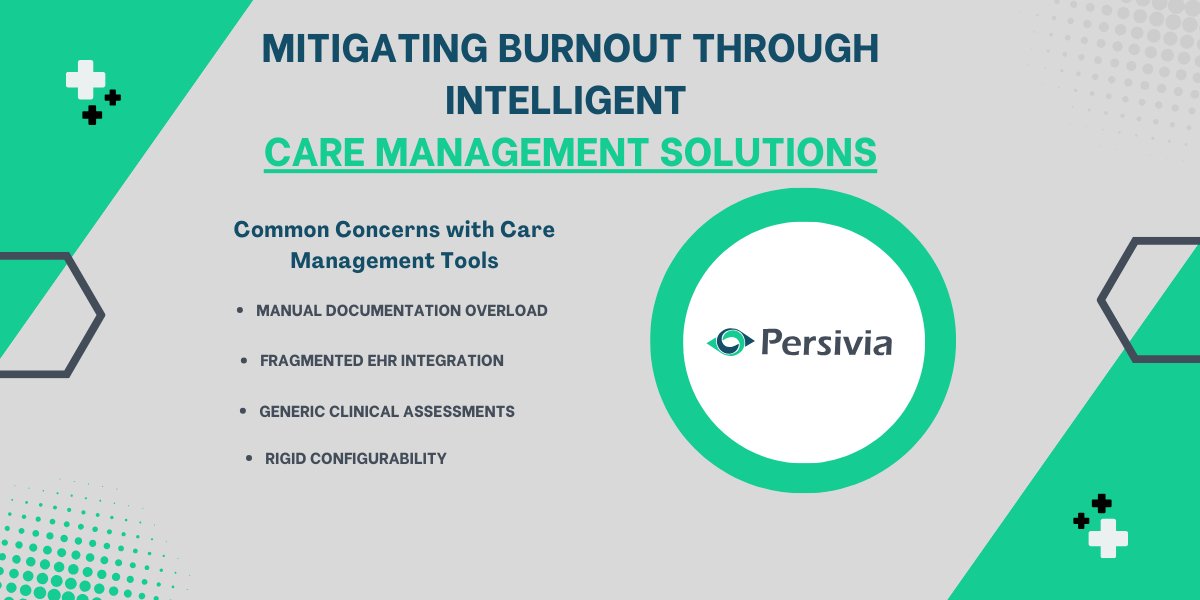
Top 10 Web Development Frameworks
Dynamic websites have gained immense popularity in the past decade. Websites today aren’t static sources of information. They are, in fact, complex applications that can be used to search for products, make transactions, view user data, stream media, make requests to the administrator, and interact with other users, all on the same platform. To provide this versatility, many developers work on multiple toolsets and then integrate these components later.
These ‘components’ or ‘functions’ may be quite standard in nature; e.g., every website needs a Login/Sign-Up page and a database that maintains and authenticates this user data. Many of these components also need to be customized according to the needs of the organization. Developers often find themselves reinventing the wheel, building components from scratch, and thus, consuming more time and resources.
This is where Web Frameworks come into the picture. Web Frameworks can be considered as the building blocks of websites. They help add functionality yet aren’t too vast to hamper creativity and customizability. Let’s understand Web Frameworks in greater detail and find out which frameworks currently rule the market!
What Is A Framework?
Essentially, a framework is a set of tools by developers for developers. These versatile and robust tools take care of the low-level functionality, leaving programmers to worry only about the high-level functionality of their program.
What Is A Web Framework?
A Web Framework is a software development platform that includes a set of basic ready-to-use programming modules, tools, and libraries. Frameworks give developers the tools and functionality they require to build websites, applications, services, APIs, and other solutions and directing the rules for doing so.
As a result, you can quickly build the skeleton of a project and then extend it based on the specifications required. Utility applications, scripting languages, code libraries, and other software can be added to a framework to make designing and integrating multiple components of a major software project simpler. In essence, it eliminates the need for programmers to code the basic functionality from square one, so they can focus on the more critical aspects of the website.
Why Is A Web Development Framework Important?
Enhances Reliability And Security
The ready-made components in frameworks have been developed to suit all possible scenarios and have also been contributed to by developers worldwide. Hence, you can rest assured that these components can provide a stable, reliable, and secure backbone to your software or web application while providing a satisfying customer experience for much lesser effort.
Speedy Development
Frameworks eliminate the need to reinvent the wheel, hence speeding up the development process by manifolds. They also provide an easy way to bootstrap into the development process through ready-to-use and optimized functions. Even while working with complicated programming languages, frameworks help to simplify the procedure using understandable and integrable functions.
Reusability
Code reusability is an increasingly popular practice among programmers. Frameworks encourage developers to create and distribute reusable code. This increases the understandability of the code and standardizes the code across teams, thus minimizing chances of error. A great example of this is the creation of Web-APIs. API is a programming language construct that allows two applications to the interface. It acts as a common boundary that facilitates integration between applications for the rapid sharing of data.
Airline companies use APIs to provide data regarding seats, bookings, and discounts to platforms that consolidate it and present it to you. News, text, information, and user data can be scraped off the Internet using popular APIs. This necessitates that organizations follow standard coding practices.
Access To Community
As the number of people relying on web frameworks increases, we see an ever-expanding community of developers that are committed to improving the tools they use. Hence members of the community have access to vast knowledge and experience of their fellow members, solutions to common problems, and extensive support and guidance.
In addition to this, developers have started building libraries within these frameworks to aid common operations, which further extends the features of these frameworks.
Easy maintenance and enhanced performance,
Frameworks define a streamlined structure for application development, making framework-based applications much easier to maintain and refine. Any new developer can quickly grasp a standard set of website components and its operational principles, and add functionality or make changes without difficulty.
Additionally, most features are designed by experts who ensure that processes run on all cores of a machine, and use its maximum resources optimally. This becomes a crucial factor while designing or developing E-commerce websites, wherein every minute of delay can discourage customers from buying, or worse, cause, erode consumer confidence.
Types Of Frameworks For Web Development:
Web development, as you may already be aware, is of three kinds- Frontend development, Backend development, and Full-stack development. Frontend and Backend development differ in domain and effects and therefore necessitate the usage of different specialized frameworks for their development.
Frontend Web Frameworks
In the context of enterprise web application frameworks, the frontend refers to the section of the site or application with which users interact directly. Previously, coders had to create code by hand to dictate these interactions and behaviors. By providing pre-written coding on which developers can build, the frontend web application framework decreases the complexity of this task.
Backend Web Frameworks
Back-end web frameworks for websites, also known as server-side frameworks, aid in building web applications. Backend web frameworks, unlike Frontend, assist with the construction of web chores such as security, user authorization, database interaction, URL routing etc.
Classification Of Framework Architectures
Web frameworks have three kinds of architectures. The architecture of a framework determines how different components will interact with each other. It is indispensable to have an in-depth understanding of the architecture you plan to use, as it directly affects the functionality of your website.
Model-View-Controller Architecture
The data model, user interface, and control logic of an application are split into three components in MVC. The model is in charge of the application’s data and business rules; the view is in charge of displaying data to the user via an interface, and the controller is in charge of interpreting user inputs and communicating with the model to make the necessary changes. This kind of architecture is used by React, Vue, Express, Angular, Ruby on Rails etc.
Model-View-View-Model Architecture
Also known as the Model-View-Binder architecture, it is used by the popular framework Knockout. In this architecture, the view layer serves as a controller, converting the Model layer’s data objects into manageable components. The data binding is substantially easier because the View layer handles all the user queries directly.
Three-Tier Architecture
A Three-tier application architecture comprises a presentation tier, an application tier, and a data tier in a modular client-server architecture. The application tier handles functionality, the data tier stores information, and the presentation tier is a graphical user interface (GUI) that appends the two tiers. The three layers are conceptual rather than physical, and they may or may not operate from the same physical server.
Top 10 Web Development Frameworks

Express.Js
JavaScript is now more versatile than ever, thanks to frameworks such as Node.js and Express.js. Fast, minimal, and robust, Express.js builds on the consumer base created by Node.js and provides a quicker and simpler way of creating websites and applications in a manner similar to Node.js.
It is one of the primary components of the MEAN software bundle, allowing for speedy full-stack framework development of Node.js-based web applications. The Express.js platform from Node.js is the best choice for building real-time streaming, leading payment gateways, eCommerce, and on-demand applications.
Pros:
- For developers using Node.js, the advanced and simplified features of Express.js will be quite refreshing
- Allows creation of a REST API server
- Database management systems supported include MySQL, Redis, and MongoDB
- It offers a lightweight module with middleware
- Features such as ORM support, Templating, and Debugging
Cons:
- Refactoring, i.e. changing the internal body of code without changing its output, is difficult for a large chunk of code in Express.js
- Programmers who wish to migrate from a different language to Express.js may find it difficult to understand its event-driven structure
React.Js
Technically a frontend library, React.js is now popularly accepted as a frontend web development framework. This top framework was the first to adopt the component-based architecture, which was later followed by Angular, Vue, and a slew of other frameworks. The virtual DOM in React makes DOM manipulation much easier, and the JSX syntax makes it simple to take up a JVM-based program. Another distinct advantage of React Native programming is that it is simple to grasp even if you are unfamiliar with HTML and CSS building components.
Pros:
- React hooks, Virtual DOM, and a component-based structure are some distinct features of React.js
- Easy to learn and has a diverse toolset
- Offers excellent SEO support
Cons:
- Poor documentation
- More prone to errors in JSX files and loop-in OOP
Django
Django is known to be the “web framework for precisians with deadlines”. Built on Python, it is used by Google, Youtube, and Instagram. This framework was created to fulfill the requirements of a fast-paced online newsroom. Model-View Controller is used by both Django and Ruby on Rails, but with a substantial distinction.
Django models define the web application’s data, views process requests and respond to them, and templates are used to show the answer. As a result, MVC does not function as an abbreviation in the Django environment, and it is better to refer to it as Model-Template View.
Django describes itself as “batteries included,” follows the DRY (Don’t Repeat Yourself) paradigm, and includes several valuable methods and utilities. This contains XML for login and admin interfaces and transitory and session-based messaging and Google Sitemaps.
Pros:
- Django offers thorough and easy-to-understand documentation, which has only grown with its popularity in the community.
- It is highly secure; it covers all back-end processes and does not leave it to the back-end developers. Programmers also do not need to define separate server files to access or manipulate the database. Django runs multiple files simultaneously.
- It is easy to plug in third-party applications while developing using Django.
Cons:
- The consistent approach over microservices in software application
- It cannot be used for making highly scalable applications
- Django cannot handle multiple requests simultaneously
Ruby On Rails
Though Ruby on Rails (RoR) was built more than 15 years ago, it is still relevant as the fastest framework for a database-driven application. It includes everything you’ll need to create dependable, high-speed solutions. You may also rely on the vast and welcoming Rails community for help anytime you need it.
Because Ruby on Rails lacks all of the functionality of a full-featured framework like Angular, React, or even Vue, you’ll have to use additional tools for front-end development. While Ruby on Rails is quick to build, it is slow to run large-scale applications and isn’t suited for multithreading. RoR is used by GitHub, Airbnb, Hulu, Shopify, etc.
Pros:
- Salient features include middleware, RoR caching, bulk insert and upsert, and parallel testing
- Has a vast community of developers
- Easy to use and can meet fast newsroom deadlines
Cons:
- Less flexibility
- Slow runtime performance
- It needs to be integrated with other tools for frontend development
Angular
Developed in collaboration with Google, Angular is a front-end framework often used for creating rich single-page apps. It’s an agile framework that can be used to develop whole client-side applications, and much more. Angular 1.x used Javascript, while later versions switched to Typescript, which is a Javascript superset. The main limitation of Angular is its size compared to other frameworks and that it is not SEO friendly by default. Angular is used by Google, Microsoft, Upwork, Lego, Netflix, and Paypal.
Pros:
- Salient features include Angular CLI, Virtual scrolling, CDK and Angular material, and Bazel compiler
- Considered one of the most robust client-side frameworks for machine learning
- Enables two-way data binding
- Supports lazy loading
- Highly testable
Cons:
- Large size may cause applications to load slowly
- Difficult to learn
Vue.Js
Vue.js is the most performant lightweight JavaScript UI component library. Vue allows you to create dynamic UIs and Single Page Applications quickly. It comes with several components that can help you create a smooth user interface. Vue is a versatile framework that lets you integrate a variety of third-party applications.
Vue is straightforward to grasp and use for developers familiar with HTML, CSS, and JavaScript without much code refactoring. It also uses data binding that is both one-way and two-way. Being lightweight, it is perfect for small-scale applications. However, unlike more extensive and heavier frameworks such as Angular or React.js, the features may not be very robust. Gitlab, Behance, Grammarly, and 9GAG are just a handful of the companies that use this framework for their projects.
Pros:
- Reusable components, Virtual DOM, State management, and Vue CLI, are some of the salient features of Vue.js
- Lightweight and easy to understand
- Concise documentation
- Enables by Watchers that help track a component and respond to changes in it
Cons:
- Not meant for large scale web development
- Not used by programmers for highly scalable applications
Spring
Spring is an MVC framework written in Java, the most widely used programming language. It is used by Wix, TicketMaster, and BillGuard, among many others. Spring has many sibling projects that improve its performance and allow you to scale your business swiftly.
For many web developers, the fact that it employs Java, a strongly typed language, is a huge plus. With the advent of the Enterprise JavaBeans model, this backend framework has gained appeal in the Java Community, even though it does not require any specific programming approach. The fundamental functionalities of a Java program can be used, and extended apps can be created on top using the Java Enterprise Edition platform.
Pros:
- Aspect-oriented programming, dependency injection, removal of controller classes and packages, etc., are some salient features
- Has a Convention over configuration pattern
- Research and testing is simple
- Great and powerful abstraction
- Provides a cohesive manner of configuring
- Provides easy data access and transaction management
- You can integrate your website with Spring MVC
- Support for testing and other fundamental technologies to aid dependency injection, validation, email, and much more
Cons:
- Expertise required to create high-functional and vigorous applications
- Integration of third-party apps is complicated
Laravel
Known for its simplicity, elegance, and readability, Laravel is a PHP-based development framework developed on MVC architecture. The authentication library of Laravel has helped it gain attention in the last decade.
Laravel has a simple syntax and a multitude of packages that extend the support of API out of the box. The educational website Laracasts, which has hundreds of helpful videos, may help you learn Laravel quickly.
Pros:
- Salient features include Artisan CLI, Inversion of Control, Laravel routing, session and queue management functions
- Flexibility and a small learning curve helps reduce the time required to build a web-app
- Excellent ecosystem and versatile libraries
- It is secure and has multiple libraries for every possible authentication. App scaling, subscription billing, OAuth2 implementation, zero downtime deployments, everything you’d think a present-day website should have, is built in natively with Laravel.
Cons:
- It is not easy to migrate to Laravel
- Small community
ASP.NET
Built by Microsoft, ASP.NET can create rich and interactive websites, web directories, and portals. Developed on compiled languages, it can build a range of enterprise applications with fantastic speed and high scalability. Asp.net Core is a new version of the Asp.net framework known for its speed, productivity, and power. It is a lightweight and high-performing device. TacoBell, GettyImages, and StackOverflow are just a handful of well-known organizations that use ASP.NET.
Pros:
- Salient features include Cross-Site Request Forgery protection, Swagger Open API support, and resourceful documentation
- It is lightweight and easy to maintain and update
Cons:
- Third-party app integration is a difficult task
- The first compilation takes loads of time
Ember
Ember.js is a JavaScript framework that follows the model-view-view-model (MVVM) architecture pattern. Ember.js is enabled with two-way data binding, like Angular.js. For every new entity, a testing program is generated by default. Ember also has a good reputation for developing advanced mobile applications, having been used by companies such as Netflix, Microsoft, Google, and Heroku.
Pros:
- Follows the Convention over configuration methodology
- It is a highly stable web framework
- Its XML-life syntax extension makes coding faster, safer, and easier
- Its Glimmer Rendering Engine, testing, and debugging tools are its salient features
Cons:
- Difficult to grasp
Summary
| Framework | Language Supported | Architecture | Front/Backend |
| Express.js | JavaScript | MVC | Back-end |
| React.js | JavaScript | MVC | Front-end |
| Django | Python | MVT | Back-end |
| Ruby on Rails | Ruby | MVC | Back-end |
| Angular | TypeScript | MVC | Front-end |
| Vue.js | TypeScript | MVC | Front-end |
| Spring | Java | MVC | Back-end |
| Laravel | PHP | MVC | Back-end |
| ASP.NET | .NET languages | MVC | Both |
| Ember | JavaScript | MVC | Front-end |
Conclusion
We explored all popular Web development frameworks and their salient features, along with their pros and cons. The summary table can help you make an informed choice based on your niche, design requirements, and preferred architecture. Make sure to use the thriving developer culture to your advantage, and remember to give back to the community.
As developers, it is crucial to stay updated with the latest revolutionary toolkits and languages in the IT industry. Nothing beats hands-on learning, especially when industry experts mentor you. Check out projects that you can add to your portfolio to make it more impressive, and keep the learning streak going!
Happy Coding!
Author Bio:
Harshita Bansal is a Technical Content Writer at Crio Blog driven by her inexplicable love for coding and writing and the need to grow her career with industry level experience. A Computer Engineering graduate, her mission is to use Web development and Data Science to contribute to the AI revolution.

Law Firm Management: How Technology is Driving Efficiency

Most Popular Social Networks: Dominating Online Platform







